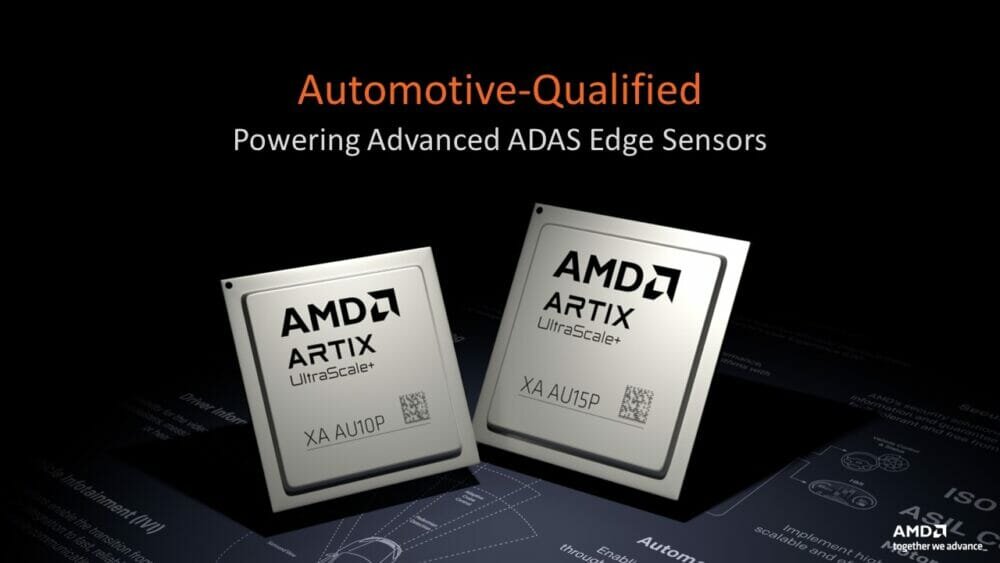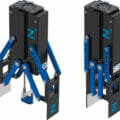Edge sensors, such as LiDAR, radar and 3D surround-view camera systems, are becoming more prevalent in the automotive market, especially with the growing adoption in autonomous driving. As more sensors are needed for autonomy, there are increasing needs for faster signal processing, reduced device costs and smaller form factors. Functional safety is also critical for many of these autonomous applications.
To address these market needs, we’re introducing two additions to our AMD Automotive XA Artix™ UltraScale+™ family: the XA AU10P and XA AU15P cost-optimized processors, which are automotive-qualified and optimized for use in advanced driver-assistance systems (ADAS) sensor applications. The Artix UltraScale+ devices extend the AMD portfolio of automotive-grade, functional-safety proven and highly scalable FPGA and adaptive SoCs, joining the automotive-grade Spartan™ 7, Zynq™ 7000 and Zynq UltraScale+ product families.
XA Artix UltraScale+ processors are certified for functional safety up to ASIL-B, which is critical for automotive ADAS sensors from cameras to LiDARs, enabling our customers—carmakers, robotaxi developers and Tier 1 suppliers—to accelerate development of autonomous vehicles.
“As automotive systems have grown in complexity, safety is more critical than ever before with automotive OEMs and Tier 1 suppliers requiring ASIL-B certification for LiDAR, radar and smart edge sensor applications,” said Ian Riches, vice president, global automotive practice, TechInsights. “Through the release of the new XA Artix UltraScale+ devices, AMD is demonstrating its continued commitment and investment in the latest functional safety solutions to serve the automotive market.”
Customers are already designing next-gen ADAS edge systems based on the new devices, including a leading LiDAR company, which will deploy XA Artix UltraScale+ devices for autonomous applications. Automotive designers can use these devices for sensor fusion, bringing in data from multiple edge sensors and performing image and video processing before porting it to an external SoC. Additionally, the new XA Artix UltraScale+ devices can be connected to multiple displays in the vehicle to enhance infotainment features.
Shipping now, these new, cost-optimized XA Artix FPGAs offer high serial bandwidth and signal compute density in an ultra-compact form factor. Artix UltraScale+ devices maximize system performance via DSP bandwidth for cost-sensitive and low-power ADAS edge applications including networking, vision and video processing and secure connectivity.
AMD in Automotive
As the pace of innovation continues to accelerate in the automotive industry, the need for high-performance compute, compute acceleration and graphics technologies is increasing. AMD is at the forefront of this inflection point, with the industry’s broadest line of high-performance CPUs, GPUs, FPGAs and adaptive SoCs. From powering in-vehicle infotainment systems to advanced driver-assistance systems, autonomous driving and networking applications where functional safety is of paramount importance, AMD provides carmakers with a one-stop shop for silicon and software solutions. For more information, visit AMD’s Automotive website.
Supporting Resources








